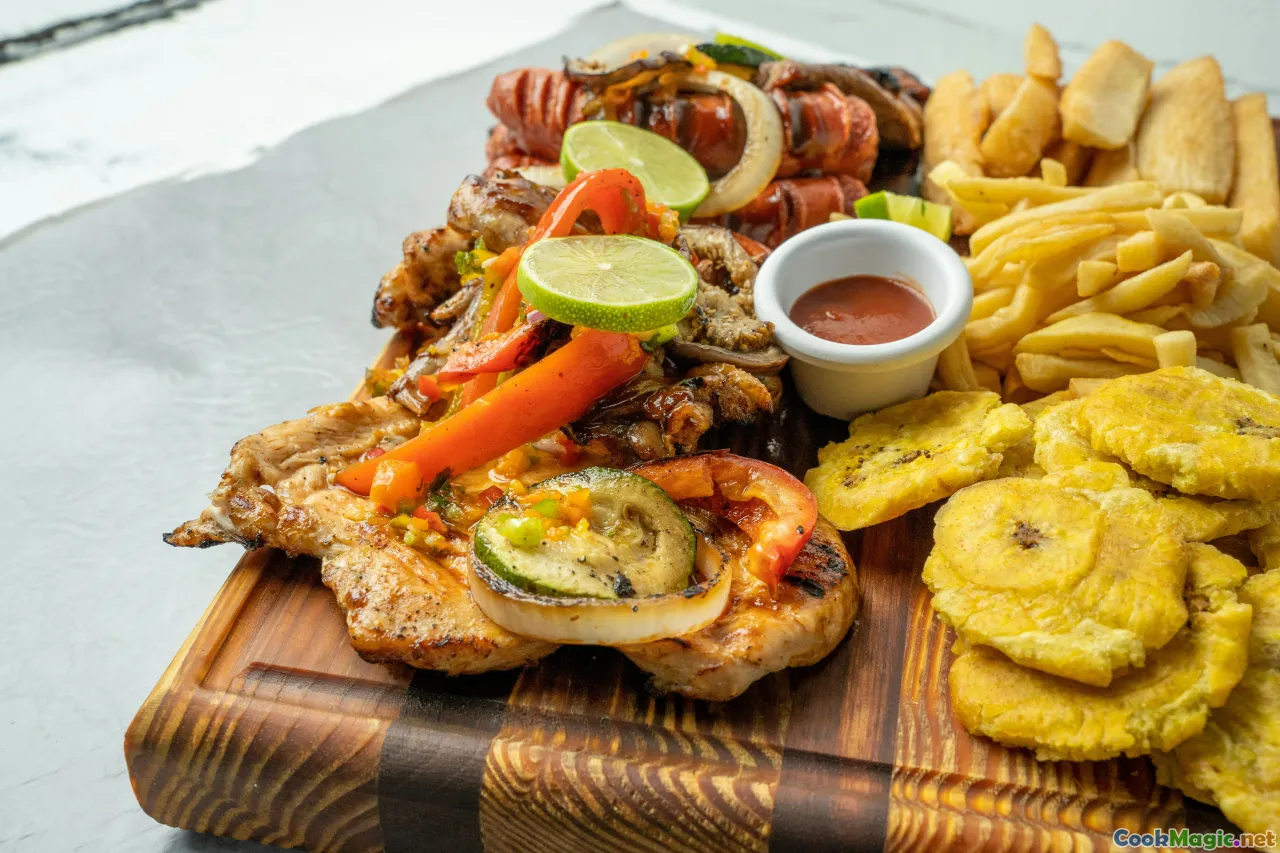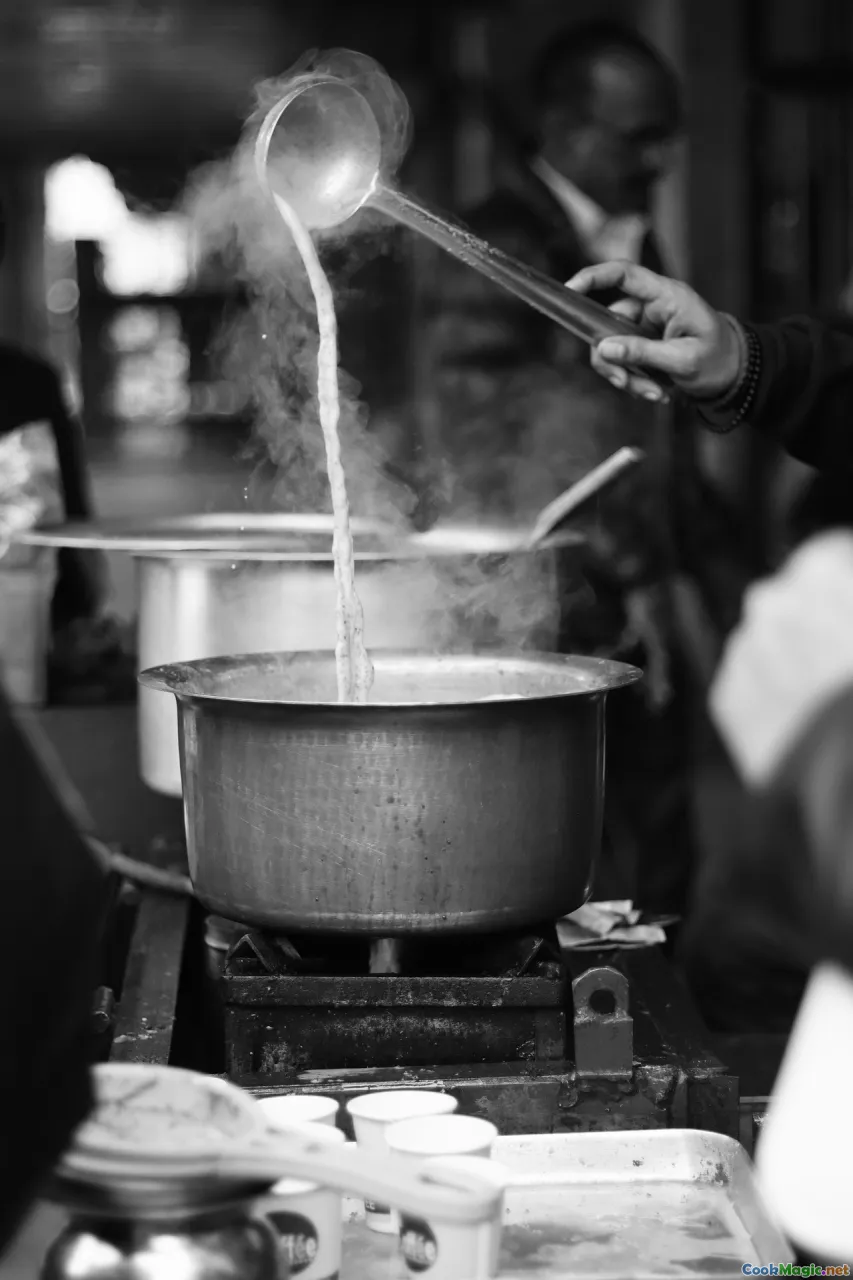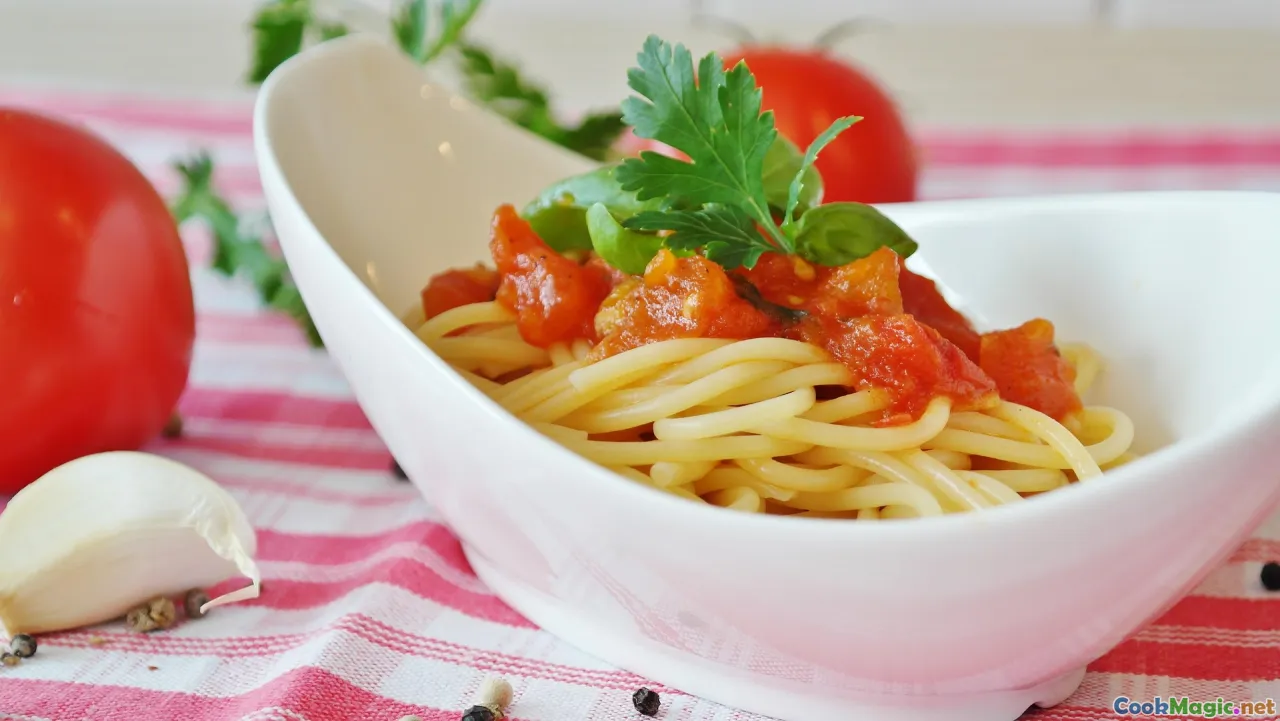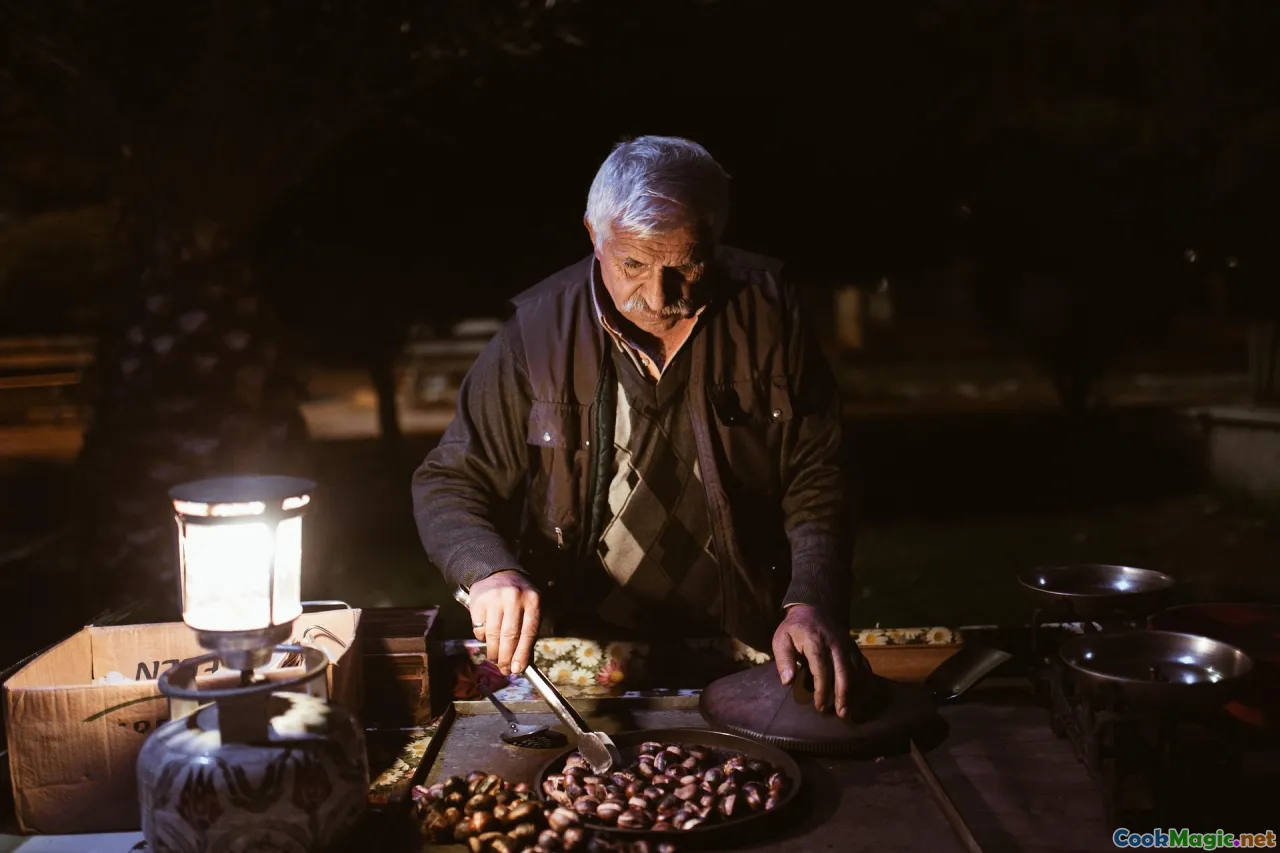How Soca Affects Culinary Fusion in Trinidad
37 min read Explore how Soca’s rhythms shape Trinidad’s culinary fusion—from Carnival street stalls to contemporary kitchens—blending Indian, African, and Creole flavors into festive, communal dining experiences. October 10, 2025 03:08
The first bassline hits you before the sun finishes rising over the Northern Range. It threads through Port of Spain’s streets like a fragrant ribbon, mixing with the perfume of frying dough and the ozone scent of lime squeezed into pepper sauce. Soca doesn’t arrive quietly; it turns the whole island into a kitchen where rhythm stirs the pot. By the time a band truck rolls past the Queen’s Park Savannah, someone is already shaving green mango for chow, the blade shick-shick-shicking in time with the riddim. If you want to know how culinary fusion really happens in Trinidad, don’t start with recipes. Start with the music.
The Beat That Built a Kitchen Rhythm

Soca was born out of a conversation between cultures, and like the best recipes, it’s balanced and bold. In the early 1970s, Garry Griffith—better known as Lord Shorty, later Ras Shorty I—began braiding calypso’s storytelling with the pulse and melody of East Indian rhythms. He searched for a sound that could make hips move without sacrificing heart. The word itself—sometimes described as the “soul of calypso”—suggests a reduction, the way a stew is cooked down until all that remains is essence.
That very notion of distillation feels familiar in Trinidadian kitchens. We cook down coconut milk until it caramelizes into fat and sweetness for pelau. We boil callaloo until dasheen leaves, okra, and pumpkin lose themselves into a velvety emerald soup. We fry bake until the edges blister and the air smells like hot flour and salt. Soca and our food share this devotion to transformation—what you begin with isn’t what you end up with, but the end result is more than the sum of the parts.
Where soca fuses Afro and Indo musical forms, Trinidadian cuisine has long embraced a three-way polyphony: African techniques (braising, stewing, one-pot cooking), Indian spice logic (geera, masala, turmeric), and European influences (salted meats, pastry, bread-making), plus Chinese and Syrian-Lebanese threads, all tied with the knot of indigenous ingredients. Chutney soca—an exuberant subgenre steeped in tassa drums and Hindi refrains—mirrors the culinary alchemy you taste in a chicken roti or a geera pork sandwich dressed with kuchela and chadon beni. The song becomes the sauce. The sauce becomes the song.
Streetside Symphony: Where Soca Meets the Snack Box

Carnival Monday. Morning light skims the Savannah, brassy and clean. The crowd glows with body paint and cocoa-brown oil, and the trucks move like whales, immense and benevolent, pushing waves of sound that curl around the coconut vendors and corn soup carts. There’s a doubles man you can find at the corner near the Grand Stand who works in a choreography so smooth it could have been choreographed by Machel Montano himself—slap bara, spoon channa, flick of tamarind, flex of pepper, a flourish of chadon beni sauce, and you’ve got breakfast: warm, turmeric-yellow, softly elastic dough hugging curried chickpeas wafting with cumin and garlic.
I take that first bite and the bassline from the truck seems to vibrate through the curry. It’s savoury heat and umami, a slow rise of Scotch bonnet on the back of the throat, soothed by the tangy murmur of tamarind. Doubles earns its fusion stripes from generations of adaptation—the bara a gift from Indian ancestors, the pepery chutneys spiked with chadon beni, a herb born in the Americas, oil-shiny and herbaceous like cilantro’s brawny cousin.
By noon, when the power soca starts sprinting and the air tastes like salt from your own skin, I want something I can eat while moving to the rhythm, something with grip, crunch, and a clean finish. I find pholourie—little golden orbs, crisp like tiny percussion instruments, dunked into mango amchar that snaps with fenugreek and mustard seeds, or into a thin, dancing tamarind sauce that pricks your tongue. Sidewalk vendors serve them in paper cones and, between beats, squeeze lime over the top from a bottle scuffed with use.
After sunset, Maracas Bay rolls its own rhythm, surf as metronome, soca spilling out of coolers and beach bars. Bake and shark is the headline act here: the fry bake puffed and burnished, the shark—a local fish, seasoned with green seasoning and geera—fried until the edges frill. The condiments bar is a palette and you become the artist: shadow beni drizzle, garlicky and grassy; mango chow that’s all green acid and salt; pineapple relish, bright as a trumpet; pepper sauce the color of warning signs. Pile it high, fold the bake over, and bite. You get crunch, fat, acid, heat, the soft bready chew, and then the ocean breeze rinsing your palate for the next mouthful.
It’s not just the big moments. St. James on a Thursday night, soca flirting with dancehall from a bar on the Avenue, you can smell souse—the vinegary sparkle of pig’s trotters, onions, cucumbers, shadow beni—joining the mix. In Central, a Debe doubles under corrugated metal sings with night rain; in Arima, a vendor fries aloo pie until the potato steams inside like a secret, then rips it open, stuffs it with curried shrimp, and passes it to you with a chunk of lime. Soca is everywhere, a conductive wire that keeps the flavors bright and the boundaries porous.
Anatomy of a Soca-Fueled Fusion Dish

What does it mean to cook to soca? I think of it like arranging a track. You need structure, a hook, a bass that holds it together, then drops of surprise to keep the body—and the palate—awake.
- Bassline: Coconut. It’s the fat that softens edges and coats the tongue. In pelau, coconut milk caramelizes around parboiled rice and pigeon peas until the grains are stained brown and aromatic, and the chicken carries a glossy glaze that tastes like sunshine learned to slow dance.
- Percussion: Geera (ground cumin) and garlic. Dry-roasted geera slaps like the popping of a snare. Sautéed garlic rides beside it, crisping at the edges, singing bitterness that balances sweet marinades.
- Melody: Lime, green mango, pineapple. Citrus is a trumpet, bright and sharp; green mango in chow is a syncopation—salty, sour, with a ragged edge from pepper and chadon beni.
- Vocals: Scotch bonnet and pimento peppers, the soaring notes that lift the whole composition. Pimento gives warmth like a smile; Scotch bonnet brings the sweat-session catharsis.
- Bridge: Tamarind. Tart and brown-sugary, it knits savory and sweet, allowing jerk, curry, and stir-fry to talk to one another without shouting.
Fusion is not confusion; it’s choreography. You can fold jerk’s allspice and thyme into a curry goat gravy by adjusting the acid balance—an extra dose of tamarind, a handful of chopped tomatoes; you can temper a sweet-and-sour Chinese-Trini sauce with charred pineapple and a dusting of geera so that it embraces rather than bullies a fried fish. Soca sets the tempo: if it’s a power soca day, you want crisp textures, portable portions, high-acid cleaners; if it’s a groovy soca night, stew and smoke can linger, the way a saxophone solo might.
There’s also a practical dimension. Soca events demand dishes that can be eaten in motion, with sweat-slick hands, often in heat. The best fusion plates honor that reality: tacos with buss-up-shut skin instead of corn tortillas; mini rotis with curried lamb and pickled cucumbers, sour enough to cut the fat; sliders of geera pork with pineapple-sorrel chutney; corn soup brightened by coconut milk and a whisper of Angostura bitters, that little floral snap balancing sweet corn.
Kitchens Behind the Fetes: A Caterer’s Tightrope

Two days before an all-inclusive fete in Chaguaramas, I visited a caterer who was marinating what felt like half a herd of goat. The air was thick with green seasoning—chopped chadon beni, scallions, thyme, garlic, and pimentos—pounded in a mortar until it breathed like the island’s lungs. Soca rolled continuous from a Bluetooth speaker, and the rhythm set the pace: onions chopped in time with the snare, curry toasted until it bloomed, then deglazed in a hiss of coconut milk that smelled faintly sweet, like toasted sugarcane.
Her menu read like a map of Trinidad in motion:
- Curry goat doubles: smaller, sturdier baras, a scoop of goat lush with masala and a hint of cocoa for body, topped with a spoon of cucumber choka for crunch.
- Tamarind-glazed wings: sticky, smoky, a lick of molasses, finished with chopped chadon beni and lime zest.
- Pholourie with two dips: mango-sorrel pepper jelly and garlic-yogurt with roasted geera—a nod to Indo and Mediterranean influences coiling into one.
- Pelau boats: rice and pigeon peas in mini leaf bowls, studded with bits of smoked turkey, carrot coins, herby and brown.
- Grilled shrimp skewers: brushed with a seasoning that smelled like North Coast spray—ginger, lime, shadow beni—then flashed over high heat until just opaque, so they snapped between the teeth.
In the corner, a young cook was making a vat of corn soup for the 2 a.m. lull, when dancers peel off barefoot to sit on cool steps and exhale. He caught the pot with a squeeze bottle of Angostura bitters you might expect in cocktails, not soup. “Just two drops,” he said, tapping the bottle like a cowbell. “Wakes it up.” And indeed, later that night, when the horns hit and the crowd loosened even more, the corn soup tasted like a gentle reset: sweet, creamy, herb-laced, with a whisper of something floral, something lifted.
North, Central, South: A Comparison of Carnival Plates

The geography of Trinidad writes its fusion differently.
-
North Coast heat: Maracas and Blanchisseuse favor grilled and fried seafood. Here soca seems to be sung by salt spray. You’ll find bake and shark with variations: a jerk-mango version that tingles and calms, a garlic-butter and shadow beni glaze that melts into the bread. Pelau served on beach blankets feels like an edible bassline—deep, steady, moreish.
-
Central’s spice: Chaguanas and Couva radiate Indo-Trinidadian gravitas—roti shops with buss-up-shut that shreds like silk ribbon, goat that hums with masala and whispers of roasted cumin. Here chutney soca blares from car trunks, and the street food gets more playful: aloo pies filled with pepper shrimp; saheena that crunches, then softens into taro leaf silkiness. The condiment bars are altars—kuchela (green mango shredded and spiced), mother-in-law (a pickled relish of shadon beni, hot peppers, carrot), sour tamarind, all with acid stout enough to cut through any fat.
-
South’s comfort: San Fernando and Penal balance stew science with roti mastery. I’ve sipped soursop juice with a pelau that tasted like a Sunday nap—smoked meats, pigeon peas, long-cooked carrots—and then, two blocks over, eaten a Chinese-Trini chow mein with pepper shrimp so fresh it nearly jumped. Soca here is as likely to blend with chutney as it is to ride over a rhythm that nods to pan or to a log drum heartbeat you feel more than hear.
Everywhere, the same dynamic: soca’s ease with blending mirrors the island’s culinary self, which never hesitated to take what worked and season it for Trinidad. Not theft—collaboration. Not confusion—clarity through spice.
How-To: Cook to Soca Tempo at Home

You don’t need a truck and a truckload of sound to let soca guide your kitchen. Try this approach.
-
Build a playlist that matches the arc of your meal. Prep to groovy soca—Kes, Patrice Roberts, Voice—to keep your hands loose and your knife steady. Switch to power soca for frying and grilling, when you need that snap and swagger.
-
Layer flavors like verses. Start with a green seasoning base: blend chadon beni, scallions, thyme, garlic, mild pimento peppers, and a squeeze of lime. Marinate proteins at least an hour—overnight if you can. Toast dry spices (geera, coriander, allspice) until fragrant before they hit the pot.
-
Balance heat with acid and sweetness. If your pepper sauce makes you see stars, companion it with tamarind or pineapple. A pinch of brown sugar—Trinidad’s molasses-rich type—can ready a sauce to carry Scotch bonnet without punishing.
-
Make it handheld. Think doubles, sliders, roti wraps, skewers, and pelau in cups. A soca party is movement; your food should move with it.
-
Finish fresh. Lime juice at the end, chopped chadon beni or cilantro, a splash of coconut milk to soften edges—these are your final choruses.
Three soca-fueled mini recipes to plug into your set:
-
Chadon Beni Chimichurri for Grilled Fish: Finely chop chadon beni, parsley, garlic, and bird peppers. Stir in lime juice, olive oil, and a spoon of finely minced green mango or cucumber. Salt until the flavors pop. Brush on hot grilled kingfish so the herbs perfume the rising smoke.
-
Tamarind Rum Glaze for Pork: Simmer tamarind pulp with brown sugar, grated ginger, a dash of cinnamon, and a splash of dark rum. Add a teaspoon of roasted geera and a few dashes of Angostura bitters. Reduce to a sticky glaze. Brush on grilled pork in the last minutes of cooking; finish with lime zest.
-
Pumpkin and Pigeon Peas Pelau with Charred Pineapple: Sauté brown sugar until caramelized; add chicken or mushroom to brown. Stir in rice, pigeon peas, coconut milk, grated pumpkin, thyme, and bay leaf. Simmer until the rice is tender. Meanwhile char pineapple wedges, chop, and fold into the pelau with a squeeze of lime. The sweet smoky pineapple lifts the dish like a horn section.
Pairing Guide: Soca Subgenres and the Plate

-
Power soca: High BPM, chest-thumping bass. Pairs with fried and grilled foods that crave acid—bake and shark with extra lime; pepper shrimp with charred pineapple; spicy chicken cutters with cucumber relish. Think crisp, zingy, and eatable with one hand.
-
Groovy soca: Mid-tempo, melodic, wine-worthy. Pairs with stews and braises—oxtail over creamy coo-coo, coconut choka with roast bakes, curry duck tucked into paratha. The food can linger; the sauces can be lush.
-
Chutney soca: Tassa drums and Hindi hooks. Naturally suited to roti, doubles, and anything with masala: saheena with tamarind; aloo pies stuffed with curried chickpeas and pepper sauce. Sour-salty-sweet sauces adore these beats.
-
Pan yard vibes: Steelpan rehearsals under zinc roofs, twilight breezes. Pairs with smoky, simple plates—grilled corn rubbed with chadon beni butter, saltfish buljol on bake, pelau that tastes like a neighborhood lime. The food is communal, the flavors layered but calm.
Market Morning: Ingredients with a Backbeat

Tunapuna Market on a Saturday hums like a pre-party. A vendor with forearms like star-fruit slices piles chadon beni into a green mountain. The scent is unmistakable: peppery, grassy, a cousin of cilantro with more muscle. Nearby, a woman sells pimento peppers—glossy green, grapelike in brightness, fragrant without the threat of Scotch bonnet. A box of limes glints, their skins dimpled and glowing, next to chopped pumpkin wedges the color of ripe mango, and bundles of fresh thyme whose smell promises warmth.
I buy hands stained with green and orange: chadon beni, scallions, thyme; a bag of pigeon peas; a slab of kingfish; tamarind pulp wrapped in clear plastic; a bottle of Matouk’s hot pepper sauce with its signature fruity burn. The fishmonger, filleting with a knife that flashes like a pan note, asks what I’m making. “Grilled fish with chadon beni chimichurri,” I say, “and pineapple chow.” He nods in time with a tune bleeding from a nearby speaker. “Add cucumbers to the chow,” he says. “Crunch. And a little salt first. Make the mango cry before the pepper hits.”
Walking home, the market colors smear together—green of chadon beni on the air, acid of limes against the nose, the sticky-sour smell of tamarind on my fingers. Soca has tuned my appetite: I want something fresh, bright, able to keep me moving. I decide to dry-brine the fish with salt and geera, grill it hard for those crosshatched lines, and finish with the chimichurri while the fish is still singing with heat. The chow will be green mango, pineapple, cucumber, garlic, shadow beni, and Scotch bonnet, massaged with salt and a hot squeeze of lime until it weeps tartness that begs to be scooped up with roast bakes.
The Emotional Plate: Diaspora and the Long-Distance Riddim

A friend of mine in London says she plays Kes’s Savannah Grass when she braises oxtail. “It flips the gray sky inside out,” she tells me, stirring a sauce that smells like cocoa and thyme and that beautiful iron-sweetness of long-cooked meat. She tosses in a spoonful of kuchela at the end—a whisper of heat, a flash of green mango sour—and the sound of a crowd singing along to soca rises from her little kitchen. The way she tells it, the dish stops being just a stew; it becomes proof that the island lives wherever there’s a pot and a playlist.
Soca carries the emotional architecture of Trinidad—the joy and release, the stubborn resilience, the willingness to mash up old and new without apology. That’s why our fusion doesn’t feel like trend-chasing. Long before chefs wrote “fusion” on menus, a grandmother in Point Fortin was dipping her paratha into stew peas while a neighbor in St. James was topping his Chinese-style fried rice with pepper shrimp and a tumble of shadow beni. Soca formalized the island’s love of cultural conversation and turned it into a soundtrack. We eat to it because we live in it.
Playbook for Chefs: Designing a Soca-Fusion Menu

If you’re building a menu for a soca-forward event—Carnival season, a fete, a backyard lime with the volume up—design with motion, memory, and mouthfeel in mind.
- Scale and hold: Choose proteins and starches that hold juiciness over time—pelau in warmers, jerk-curry wings glazed to resist drying, stewed oxtail sliders on slightly sweet rolls that stay soft.
- Portable texture: Fry batters thin for extra crunch (pholourie, saheena). Crispness punctuates the music like a snap of fingers.
- Condiment bar choreography: Offer pepper sauces of varying heat; tamarind and mango chutneys; dill-pickled cucumbers; lime wedges; a bottle of Angostura bitters for brave souls to dot into corn soup.
- Cross-genre bites: Buss-up-shut tacos stuffed with channa and jerk mushrooms; geera pork buns with pineapple-sorrel glaze; coconut-braised callaloo arancini with pepper jam; bake-and-shark sliders with miso-lime mayo and shadow beni.
- Temperature games: Pair hot and cold—spicy shrimp skewers with cooling green papaya slaw; slow-braised goat on roti with shaved ice chaser of mauby or sorrel.
- Rhythm-aware plating: Cluster foods in odd numbers, leave finger space, use parchment or banana leaves to manage grease, and let colors pop like Carnival costumes. Lime-green sauces, sunset-orange chutneys, purple cabbage slaws—your plate should look like a masquerader.
Pantry of Possibility: Sourcing the Trini Staples of Fusion

Build a small but potent Trinidad pantry to make fusion effortless.
- Chadon beni (culantro): The herb behind the island’s green. Use in seasoning pastes, chutneys, and finishing oils.
- Pimento peppers: Mild heat, intense aroma. Essential for green seasoning.
- Scotch bonnet: Fruity fire. Use whole in stews for aroma; mince for heat.
- Geera (ground cumin): Toast before use; it’s Trinidad’s percussion spice.
- Garam masala and curry powders: Look for locally blended versions with roasted notes.
- Tamarind pulp: Sour, sticky, and forgiving. Excellent at knitting flavors.
- Coconut milk: Full-fat if possible. For pelau and curries.
- Angostura bitters: Not just for rum punch—try a drop in corn soup or caramel sauces.
- Pepper sauces: Fruity Matouk’s or local small-batch bottles; heat levels from flirtatious to fatal.
- Kuchela and mother-in-law: Trinidad’s condiments of crave. Sour, spicy, textured.
If you’re abroad, Caribbean markets and online sellers carry these staples. Fresh chadon beni is tricky to find; cilantro with a few chopped culantro leaves (in Latin groceries) gets you closer than cilantro alone. For pimentos, blend jalapeño with sweet bell pepper and a touch of allspice to mimic the aroma without the heat.
The Sound of Technique: Timing and Heat

The savor of Trinidadian fusion is as much technique as ingredient. Soca helps you hear it.
- Curry properly: Bloom curry powder in oil until the sharpness mellows and the aroma turns nutty and round; then add water to make a paste; then add your protein. The sizzle should be a cymbal, not a siren.
- Brown like a masquerader: For stews, melt brown sugar until it smokes at the edges and goes the color of old mahogany before adding meat. You want caramel, not bitterness. The smell is like a drumline—big, resonant, chesty.
- High-heat sear for fish: The sizzle should dance in place, not scream. When the fish releases easily, flip. Finish with lime while it’s singing.
- Pelau patience: After you add coconut milk, simmer until you see glossy bubbles of fat and the rice edged with brown sugar’s haunting sweetness. If it’s rushing, your bassline is off.
Timing becomes intuitive when the music is there, encouraging you to let onions sweat until their bite dissolves, or to pull wings from oil exactly at the moment they acquire a glassy crackle. Soca turns the kitchen into a rehearsal, each repetition better, tighter, freer.
Moments That Taste Like Songs

- When the first horn line of Savannah Grass hits and a vendor passes you a cup of icy sorrel streaked with ginger, the drink tastes crimson and cool, tart enough to make your shoulders rise, sweet enough to make them drop right back down.
- When Nailah Blackman’s voice skims over a groovy beat and someone hands you a paper boat of geera pork, the meat is brown and spiced, the heat cumulative, the lime wedge on the side the necessary bright note.
- When a steelpan side rehearses under zinc roofing in Laventille, a pot of callaloo breathes in the corner—dasheen leaves silky as velvet, coconut milk and crab infusing the green with brine and fat. The soup is a slow song with a backbone.
- When a 4 a.m. J’ouvert crowd streams past and a lady under a flapping tarp ladles corn soup, the steam rushes your face; you smell thyme, green onion, corn’s gold sweetness, and pepper’s prickle. You drink it, and the world rights itself.
Respecting the Blend: Cultural Care in Culinary Fusion

Fusion thrives when it honors origin. In Trinidad, that looks like crediting Indo-Trinidadian techniques when you fold curry into a jerk marinade; like acknowledging Chinese-Trini contributions when you serve pepper shrimp on buss-up-shut; like paying your vendors fairly and learning the difference between chadon beni and cilantro before you write a menu blurb.
Respect shows up in the details: getting your roti dough soft and rested; toasting your geera before you grind; learning why some homes add a little ketchup to stews—not to adulterate, but to balance acid and sweet in a quick weeknight fix. It’s using soca not as a gimmick but as your tempo, the heartbeat of a living foodway.
A Personal Plate to Close the Loop

A few nights after Carnival, the city is quieter. The trucks have rolled away; the paint is scrubbed from sidewalks. I’m at a kitchen table with friends, plates of leftovers turned into something new: pelau heated in a cast-iron skillet until the rice almost crisps at the edges; pickle-spiked slaw brightening jerk chicken shredded off the bone; a small bowl of callaloo with a rain of lime. The speaker is low, a groovy track looping that makes the room sway without us standing.
I drizzle tamarind over a piece of chicken and it tastes like a memory unfurling—first the smoke, then the brown sweetness, then the lime slice that bites down near the finish. I spoon pelau and the coconut and geera say home, even if we’re halfway up a hill or across an ocean. The music reminds me what I’ve learned all week in kitchens and streets: the reason Trinidad’s fusion feels effortless is that it’s not engineered for novelty. It’s lived. Soca taught us to blend—not just in sound, but at the table where we pass around pepper sauce and share from the same pot, where someone always says, Taste this, nah, and you do, and the flavor lands and your shoulders move before you realize you’re dancing.
In that small sway is everything—the rehearsal and the release, the cool of lime and the heat of Scotch bonnet, the hush of callaloo and the snap of fry bake, the steel of pan and the softness of a roti that tears like tissue in your fingers. Soca isn’t background music to Trinidad’s culinary fusion. It’s the metronome of our appetite, the bassline under every plate, the reason sweet finds sour, smoke welcomes spice, and strangers become neighbors in the time it takes for a truck to turn a corner and carry the chorus down the next street. And when the last note fades and the last pepper fleck tingles on your lips, you find yourself smiling, reaching for a napkin, already listening for the next beat that will send you back to the pot.









